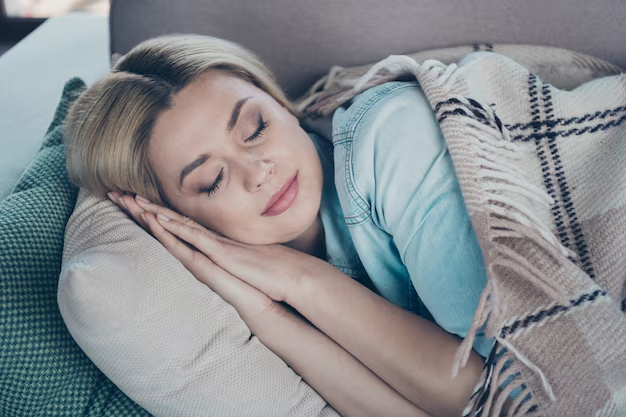Sleeping Soundly: Tips to Help Prevent Sleep Apnea Naturally
An unexpected disturbance in your dream might not be the haunting memory of that horror movie you watched. It could be something more fundamental: sleep apnea. So, how do you gear your nighttime routine to not just improve your sleep quality but possibly stave off sleep apnea in the first place?
Understanding Sleep Apnea
Before diving into practical tips, it’s essential to understand what sleep apnea is. Sleep apnea is a sleep disorder characterized by pauses in breathing or periods of shallow breathing during sleep. These pauses can last from a few seconds to minutes and occur multiple times per hour.
The most common form is obstructive sleep apnea (OSA), where the throat muscles intermittently relax and block the airway. Central sleep apnea, though less common, involves the brain not sending the proper signals to control breathing.
Why Attention to Sleep Posture Matters
For those who might be concerned about developing sleep apnea, it's worth noting how sleeping position significantly impacts airway openness:
Sleeping on Your Back (Supine Position): This position can cause the tongue and soft palate to collapse to the back of the throat, potentially obstructing the airway.
Side Sleeping: Opting for a side position can help keep the airway open. Particularly, the left side is often recommended for improved circulation.
Stomach Sleeping (Prone Position): While this can help keep the airway open, it might cause neck or back pain. It’s important to find a comfortable balance if you choose this position.
The Role of Pillow Selection
Your choice of pillow can also make a notable difference. Choosing the right pillow is essential for neck alignment and breathing ease:
- Elevated Head: A wedge pillow can help elevate your head while keeping your spine straight, aiding in reducing airway collapse.
- Contour Pillows: These can cradle your head and neck, aligning them better with your spine.
- Avoid Overly Plush Pillows: While comfort is important, overly soft pillows might not provide the necessary support.
Creating a Sleep Environment that Promotes Airway Function
An optimal sleep environment isn’t just about cozy sheets and a dark room—it's about promoting the right conditions for unobstructed breathing:
- Maintain Ideal Room Temperature: Too hot or too cold can disturb your sleep and possibly affect breathing patterns.
- Use a Humidifier: Dry air can irritate airways, a humidifier adds moisture and can make breathing easier.
- Limit Noise and Light: These can disrupt sleep cycles, making restful sleep elusive.
Lifestyle Adjustments for Better Sleep
Sometimes, preventing sleep apnea can be as much about lifestyle as it is about your sleeping position:
- Weight Management: Excess weight, especially around the neck, can increase the risk of airway obstruction.
- Regular Exercise: This can help maintain a healthy weight and improve sleep quality overall.
- Avoid Alcohol and Sedatives: These can relax the muscles of your throat, making you more susceptible to airway blockage.
- Smoking Cessation: Smoking can inflame and contribute to airway blockage.
Breathing Exercises and Routines
To keep those airways in check, incorporating certain exercises can tone your upper airway muscles:
- Diaphragmatic Breathing: Deep breathing exercises can strengthen the diaphragm and improve airflow.
- Throat and Tongue Exercises: Specific exercises can target the muscles of the throat and improve space in the airway.
- Nasal Breathing: Practicing through the nose can counteract mouth breathing, which is often associated with sleep apnea.
Mindfulness and Stress Management
Stress and anxiety can frequently play a negative role in your sleep quality:
- Mindfulness Meditation: This can reduce stress and promote relaxation, making it easier to fall asleep.
- Yoga and Tai Chi: Such practices calm the mind and improve breathing patterns.
- Scheduling Consistent Sleep: Going to bed and waking up at the same time each day can reinforce your body’s natural rhythm.
Engaging in a Tech-Free Routine
Technology is everywhere—even in the bedroom. However, for better sleep, power down before bed:
- Blue Light Exposure: It’s advisable to reduce screen time at least an hour before bed. Blue light can interfere with the production of melatonin, a hormone that promotes sleep.
- Reading vs. Browsing: Choosing to read a book instead of scrolling on your phone might significantly impact your transition into restful sleep.
Importance of Professional Assessment
While many strategies can help reduce the risk of developing sleep apnea or lessen its impact, it's important to recognize when a professional opinion is necessary:
- Evaluating Persistent Symptoms: If breathing irregularities during sleep continue, seeking a sleep specialist is advisable.
- Sleep Studies: These can provide comprehensive insights into your sleep pattern and help in diagnosing conditions like sleep apnea.
Preventing sleep apnea—or at least mitigating its impact—begins with understanding your body's needs and amending your sleep habits accordingly. A holistic view that combines healthy practices, a conducive sleep environment, and attention to breathing patterns can pave the way for nights of uninterrupted, restful sleep. Taking proactive steps today can lead to better sleep health tomorrow.
🌟 Summary of Sleep Apnea Prevention Tips:
- 🛌 Choose the Right Position: Side sleeping is ideal for keeping your airway open.
- 🛏️ Invest in Supportive Pillows: Supports alignment and elevates the head.
- 🏋️ Engage in Lifestyle Adjustments: Include regular exercise and maintain a healthy weight.
- 🌿 Create a Sleep-Conducive Environment: Control room temperature, use humidifiers.
- 📱 Limit Technology: Reduce screen time before bed.
- 💡 Practice Breathing & Relaxation: Engage in exercises to strengthen airway muscles.
- 🤝 Consider Professional Advice: Don’t ignore persistent symptoms; consult a specialist.

Related Articles
- Can a Deviated Septum Cause Sleep Apnea
- Can Apple Watch Detect Sleep Apnea
- Can Losing Weight Cure Sleep Apnea
- Can Losing Weight Help Sleep Apnea
- Can Sleep Apnea Be Cured
- Can Sleep Apnea Cause Headaches
- Can Sleep Apnea Cause High Blood Pressure
- Can Sleep Apnea Cause Weight Gain
- Can You Have Sleep Apnea Without Snoring
- Do I Have Sleep Apnea